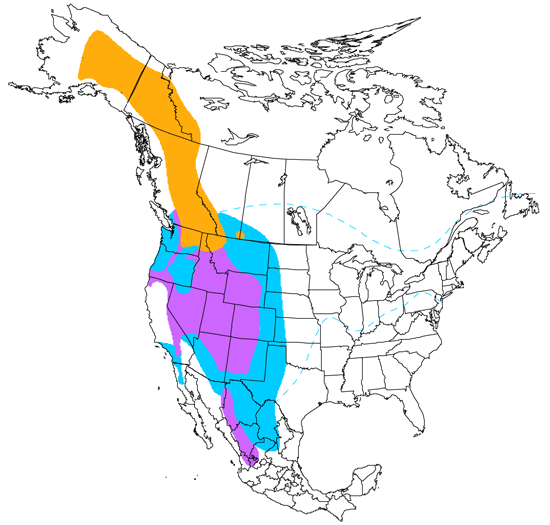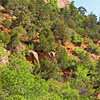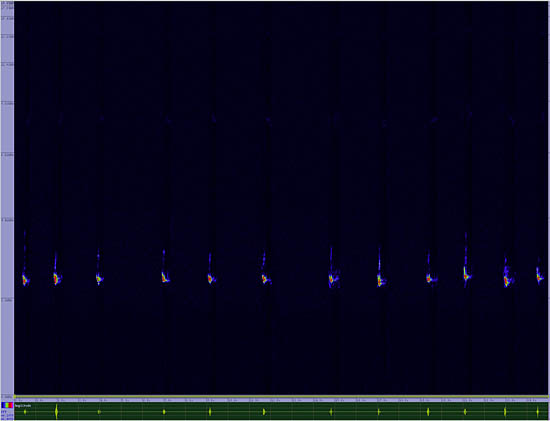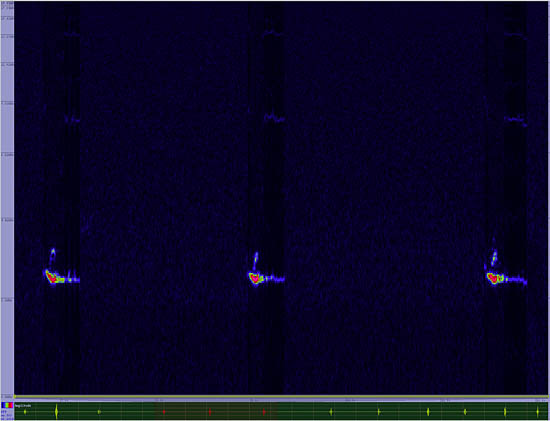Townsend's Solitaire
Myadestes townsendi

Perching
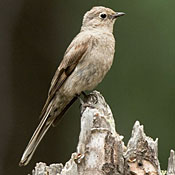
Length: 9 in. (22 cm )
Aptly named, the solitaire is usually seen alone sitting high in a coniferous tree looking much like a large flycatcher. During the summer, it is confined to high and steep mountain sides where it nests in steep banks amid trees roots. The nest itself is made of twigs and grass stems, and the young are fed insects and an occasional worm. However, in the winter the solitaire descends to lower elevations and feeds almost exclusively on berries, especially those of juniper trees.
The four-digit banding code is TOSO.
Bibliographic details:
- Article: Townsend's Solitaire
- Author(s): Dr. Biology
- Publisher: Arizona State University School of Life Sciences Ask A Biologist
- Site name: ASU - Ask A Biologist
- Date published: 13 Jul, 2017
- Date accessed: 8 July, 2025
- Link: https://askabiologist.asu.edu/activities/bird/townsends-solitaire
APA Style
Dr. Biology. (Thu, 07/13/2017 - 15:37). Townsend's Solitaire. ASU - Ask A Biologist. Retrieved from https://askabiologist.asu.edu/activities/bird/townsends-solitaire
Chicago Manual of Style
Dr. Biology. "Townsend's Solitaire". ASU - Ask A Biologist. 13 Jul 2017. https://askabiologist.asu.edu/activities/bird/townsends-solitaire
MLA 2017 Style
Dr. Biology. "Townsend's Solitaire". ASU - Ask A Biologist. 13 Jul 2017. ASU - Ask A Biologist, Web. https://askabiologist.asu.edu/activities/bird/townsends-solitaire
Be Part of
Ask A Biologist
By volunteering, or simply sending us feedback on the site. Scientists, teachers, writers, illustrators, and translators are all important to the program. If you are interested in helping with the website we have a Volunteers page to get the process started.



